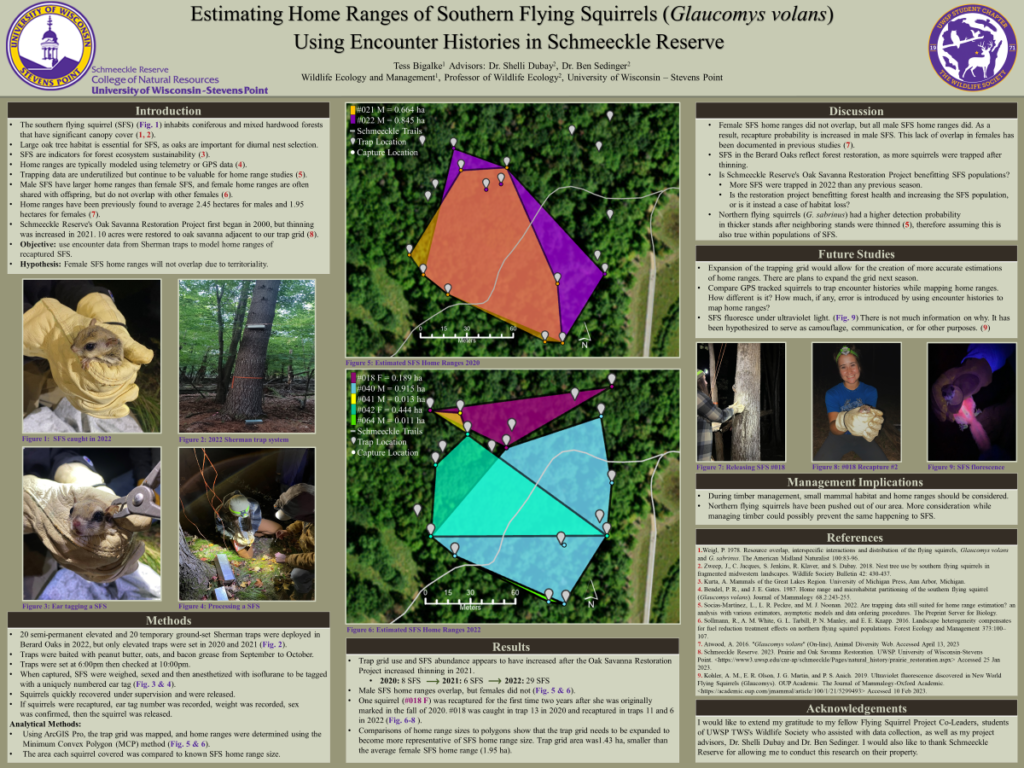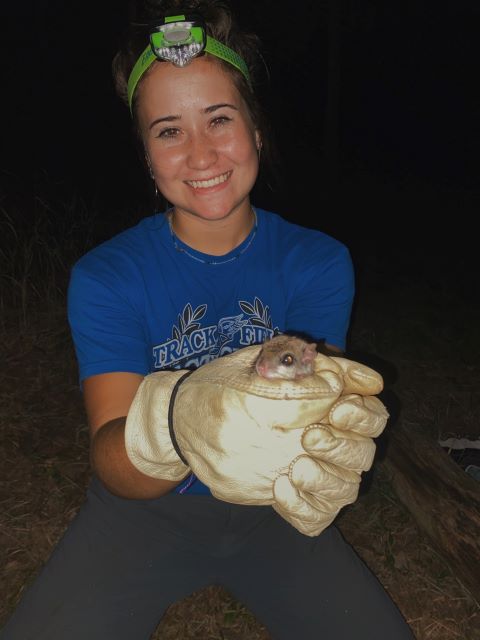by Barbara Dixson

Tess Bigalke spends her fall evenings In Schmeeckle Reserve with flying squirrels. So long as the temperature is above forty degrees and the wind below fifteen miles per hour, Tess and the other seven co-leaders of the Flying Squirrel Project take turns heading out to Berard Oaks at 6 p.m. to bait the traps with peanut butter, oats, and bacon grease, and returning at 10 to see who’s come visiting. When Tess began working with the project, no one had caught a squirrel in over two years. But gradually, the numbers increased. This year, they trapped 29 different flying squirrels, 57 with recaptures, measuring, weighing, ear tagging, and then releasing them back onto their trees.

Tess began out of “casual interest,” and she has continued because of all she has learned and because she has “become passionate about the species.” Though she grew up trapping, hunting, and fishing, the flying squirrel project has brought her to a whole new skill level in working with wildlife. She’s learned time management, organizational skills, monitoring methods, leadership, and how to lead a group of volunteers. She loves the chance to “watch people’s interest get sparked,” and for new volunteers to “find a passion.”
This fall, Tess and other co-leaders took Chancellor Gibson, along with his wife and daughter, out on the project one evening. “It’s awesome,” Tess commented, “to have a chancellor who’s making these connections to students.”
And, she concluded, “It’s nice to have Schmeeckle to make the project more accessible.”
See the poster below, which Tess developed for a presentation of her flying squirrel research.

